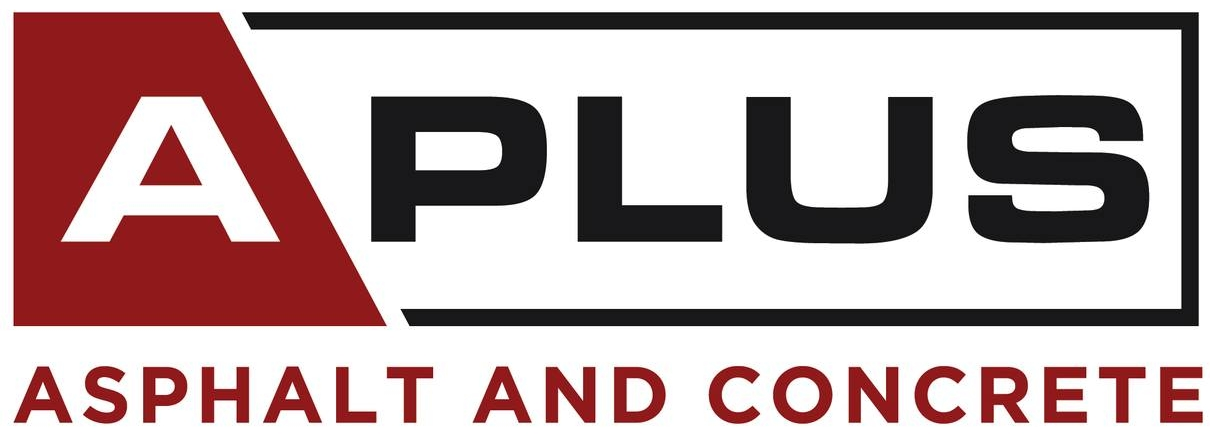FAQs
A Plus Asphalt & Concrete
Have a question about concrete or asphalt? A Plus Asphalt & Concrete has the answer. Check out these FAQs and give us a call today for more information!
-
Will I have to close my business during a project?
This can generally be avoided. We will work with you to make sure your clients and customers can still access your building. In other words, a large project can be completed in phases to allow this to happen.
-
Can work be scheduled on the weekend?
We will try our best to accommodate our customers’ needs. We do try to complete projects around a business’ schedule to cause the least amount of disruption; this includes working during the weekend and/or nights.
-
Will you barricade my parking lot?
We will set up barricades and traffic cones to block off traffic to areas being worked.
-
What is the difference between asphalt resurfacing and seal coating?
The key difference is that resurfacing/ rehabilitation is a structural repair that will extend the useful life of your asphalt surface. Resurfacing involves the patching (if necessary) and resurfacing of the entire driveway with a new overlay of 1 ½” to 3″ of hot bituminous asphalt. Seal coating is not a structural repair and may be likened to painting your house. The seal coat protects and extends the life of your asphalt, but does not correct structural flaws. Seal coating, accordingly, is substantially less expensive than resurfacing your drive.
-
How soon can I drive on new asphalt pavement?
While asphalt surfaces typically take 30 days to fully cure, they can typically be driven on almost immediately. Care should be taken though to prevent tire divots (caused by turning the steering wheel while the vehicle is stationary) during this initial period.
-
What are the pros and cons of using asphalt versus concrete?
Many think this is a matter of personal taste. Asphalt, when well-maintained, looks sharp with the contrast between the black asphalt and painted stripes. Aesthetics aside, the two primary differences are:
Asphalt is flexible and can flex with use and shifts in the base. Concrete relies on its internal strength to absorb loads and bridge weaknesses in the base.
Concrete costs significantly more to install, but has less upkeep.
-
How often should I seal coat my parking lot?
Your parking lot should be seal-coated every 36 months at a minimum. Heavy traffic and element exposure may require your parking lot to be seal-coated sooner.
-
Will seal coat make my parking lot slippery?
A Plus Asphalt and Concrete uses a sand-slurry blend that will not make your parking lot slippery.
-
How many coats of seal coat should be applied?
We apply two coats of seal coat to all asphalt surfaces. This helps ensure the seal coat will last longer and protect your parking lot.
-
Will seal coat cover oil stains?
The seal coat will not properly adhere to oil-stained surfaces without first treating the oil-stained area. We apply oil spot primer to all oil-stained areas of a parking lot before seal coating.
-
Can seal coat be applied in any type of weather?
No. Seal coat should be applied when temperatures are at least 50 degrees and rising. Care should also be taken to avoid rain during or shortly after the seal coat is applied. Generally, three hours is long enough for the seal coat to set and adequately prevent washing out the seal coat.
-
Will my concrete slab crack?
While all concrete has the potential to crack, we do take measures to prevent excessive cracking. This includes proper rebar reinforcement, compaction of subgrade, and proper use of control and expansion joints.
-
How soon can my new concrete be used?
Weather dictates this to some extent. In warm and hot weather concrete can safely be used for pedestrians within 24 hours. Vehicular traffic should be avoided for the first 7 days (unless high-early concrete is used). The concrete does not fully cure for 28 days.
-
What exactly is concrete?
In simplistic terms, concrete is a mixture of Portland cement, a fine aggregate (sand), a coarse aggregate (gravel), water, and several chemical additives. When water mixes with the cement, a process known as ‘hydration’ takes place that binds the whole mixture together.
-
What kind of sub-base should I have?
All topsoil must be removed. Then a granular sub-base should be installed and compacted to uniform thickness. Proper sloping should be used to allow adequate water drainage.

Share On: